A tent protects you from rain, wind and helps with keeping you warm. That said, most tents are pretty bulky. Therefore, a lot of ultralight hikers have been looking for valid alternatives. You might not even care about the weight, you might just be looking for a challenge and go with a more survival setup.
What makes a good shelter
If you want to go camping without a tent, you should know what makes a good shelter. Generally, you want to stay dry and out of the wind. If your shelter does not offer protection from rain and wind, it will be very hard to stay warm.
Think about the circumstances before deciding what kind of shelter you want to use. In the middle of the winter, staying warm will be more important than during summer. Therefore, you want to make sure that your shelter can protect you both from rain and wind.
There are also some other things to consider like protection from insects and other animals. This might be rather important in certain areas.
Tent alternatives for camping
Hammock
A hammock has always been a very popular alternative to a tent. A lot of people assume that a hammock is always lighter than a regular tent. However, this is not always the case. You do not only need an actual hammock, you will also need a rainfly and potentially even a bug net. Additionally, if it’s cold, you’re going to need an underquilt and a top quilt.
A hammock is a great alternative for a tent, but if weight is a very big issue, you might consider another alternative like a bivy or a tarp.
Looking for a good hammock setup? I would recommend the Hennessy Hammock Expedition Series.
Bivy
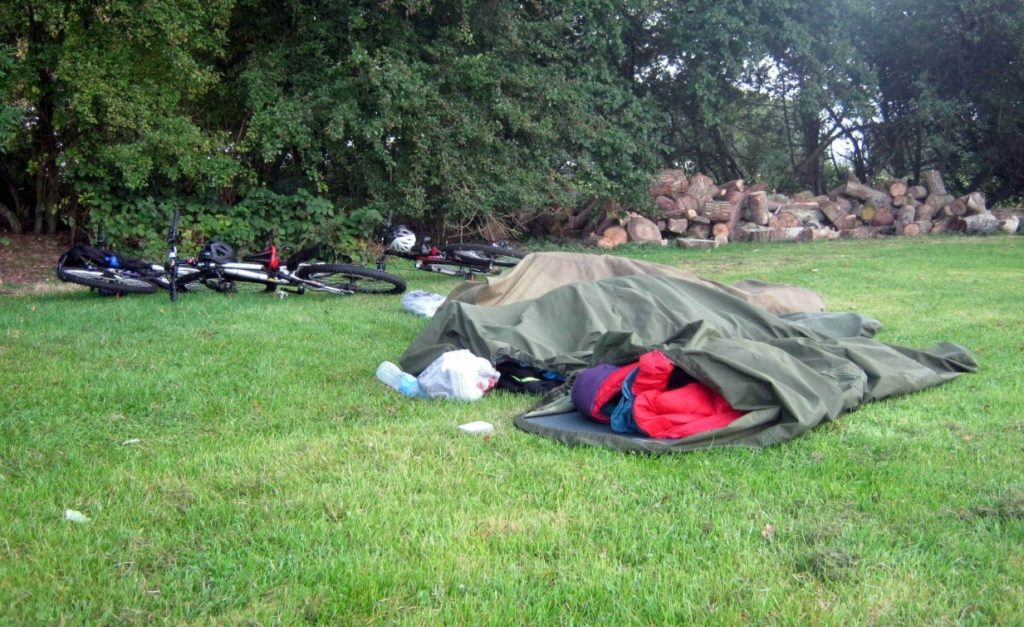

I would describe a bivy as something between a very tight tent and a waterproof sleeping bag.
This is one of the best things to use if you want to go ultralight. It protects you from rain, wind, bugs, etc. It’s still very lightweight, however. The only sacrifice you make is comfort, but most ultralight hikers don’t care too much about that anyway.
A bivy is great for sleeping, but that’s about it. Depending on what type of bivy you would bring, even reading will be uncomfortable.
Looking for a good bivy to bring on your next hiking/camping trip? I would recommend the Outdoor Research Alpine Bivy.
Tarp
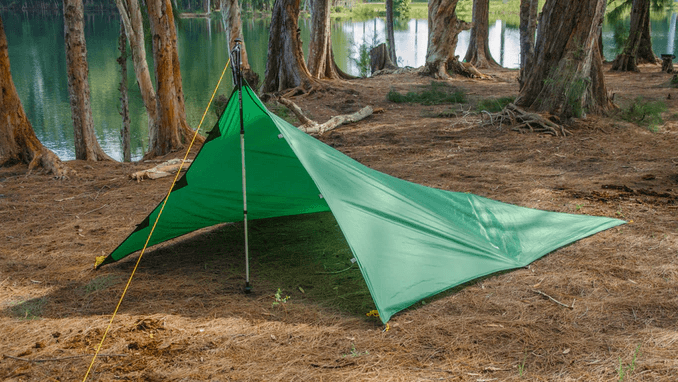

A tarp is another great option for ultralight hikers. People who care a lot about making a lot of miles and less about comfort would really benefit from using a tarp.
A tarp offers protection from rain, but it does not always offer a lot of protection against the wind. It’s a perfect sleeping setup when it’s not too cold at night. However, on a cold night, I would always prefer to sleep in a tent, even if that means carrying a heavier backpack.
It’s not impossible to use this setup on cold nights, but you would need a very good sleeping bag (and pad). Additionally, you should try to find a place where you have some natural protection against the wind.
Looking for a compact tarp to bring on your next hiking trip? My recommendation would be the Sea to Summit Escapist Tarp.
I did also write an article about the best budget backpacking tarps, feel free to check it out if you are interested!
Leaf hut
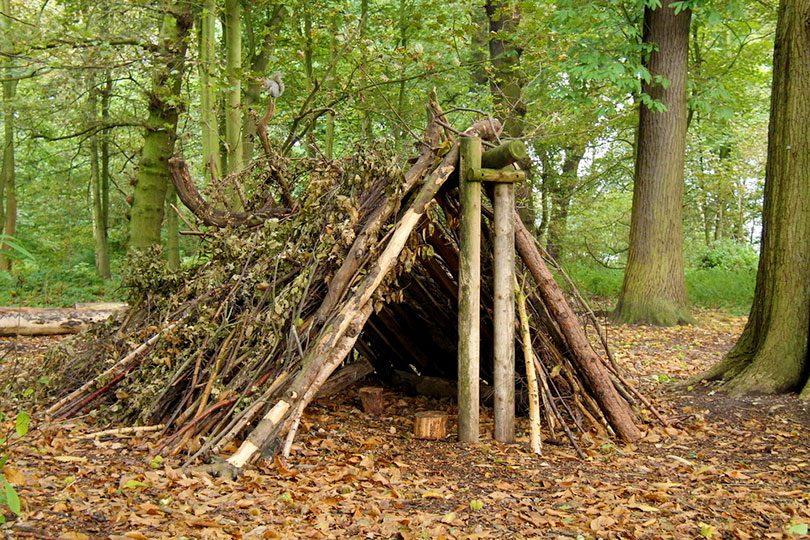

If you want to turn your camping trip in a survival trip, you could try to build yourself some natural shelter.
The idea is to make a simple wooden frame and cover it with a thick layer of leaves.
A leaf hut is one of the simplest and most effective natural shelters you can build. Combine this with a bough bed to make sure you don’t lose body heat to the ground. This becomes especially important if you do not carry a sleeping pad.
A leaf hut can be waterproof. That said, it won’t be as bulletproof as a good tent by far. Especially if you are not experienced at making natural shelters.
If you take your time and you know what you are doing, this can be everything you need.
Trench shelter
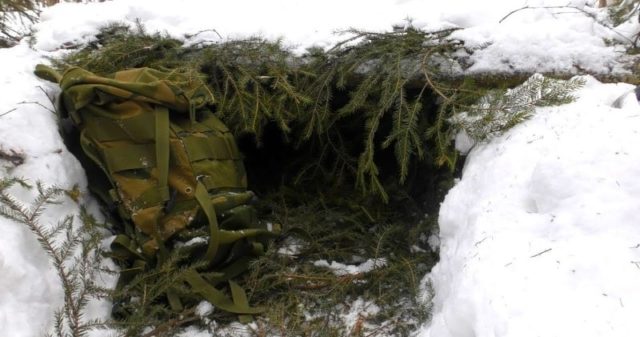

If you want to use a natural shelter in the middle of a snowfield. The trench shelter is probably your best option.
A trench shelter consists of two walls made out of snow. The top can be closed with natural materials or a rain fly.
It’s important to not that there should not be too much room inside if the shelter. The shelter is designed to trap your body heat as good as possible.
A trench shelter protects you from the wind and the rain and is fairly easy to make.
Make sure to cover the ground with some kind of insulation. You don’t want to lose body heat to the ground. If you want you can even cover the walls with some kind of insulation material. Spruce green is probably the most common insulation material in these circumstances.
Quinzhee
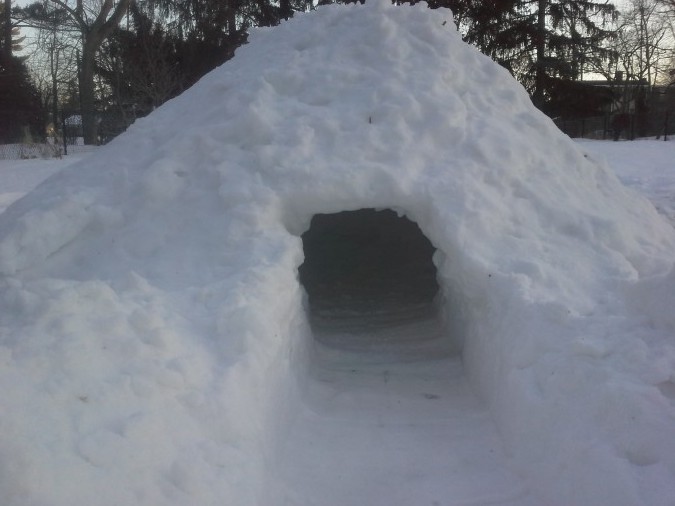

If building a trench shelter is not challenging enough for you, you could consider a quinzhee instead.
A quinzhee looks a little bit like an iglo. However, they are very different in the way they are made.
An iglo is made by stacking blocks of snow. A quinzhee is made by creating a pile of snow and shape it hollow.
Note that creating a quinzhee is not danger free. The entire shelter could collapse on top of you and you might get stuck underneath the snow. Be especially careful if you are inexperienced, it’s not recommended to try this out when you are alone.
In a real survival situation a trench shelter would be more effective.
Bough bed


A bough bed will limit the amount of heath your body loses to the ground. The idea is to collect leaves, evergreen boughs, grass, etc. And place them between some logs. This makes a fine mattress that will keep you insulated from the ground.
This is not really a shelter on its own, but it’s perfect to combine with a leaf hut or a tarp. If you are not planning to bring a sleeping pad than this is basically a must. Are you going full survival mode and did you decide not to bring a sleeping bag? You could make a deeper bough bed so you can cover yourself with some natural insulation as well.
Additionally, if it won’t be a cold night and you know that it’s not going to rain, this might actually make a pretty decent shelter on its own. Perfect for looking at the stars.
Shelterless
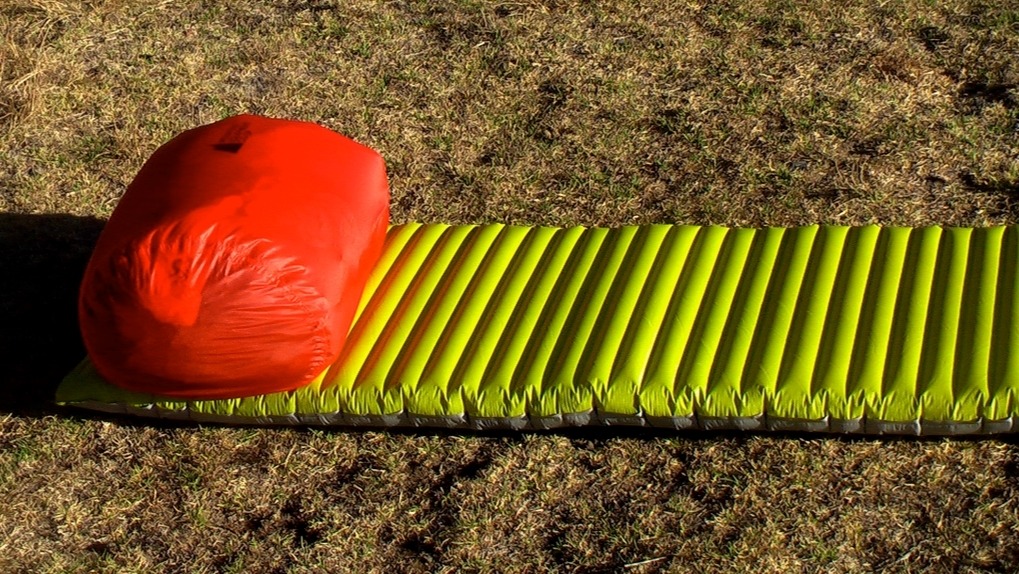

A shelter might not always be absolutely necessary. In some situations you can get away with sleeping under the stars. Make sure to do proper research before you would decide to do this.
If you are not absolutely sure that it is not going to rain, I would always recommend to at least bring a lightweight tarp (can be a cheap one).
Keep in mind that even when it is not very cold outside, your body can still lose a lot of heat to the ground. Always bring a good sleeping pad. I have always recommended bringing a Therm-a-Rest sleeping pad: Therm-a-Rest Z Lite Sol Ultralight Foam. If you prefer an inflatable mattress: Therm-a-Rest Prolite Ultralight Self-Inflating.
Things to think about before picking your shelter
Before deciding what shelter you should bring on your next trip (if you are not building one), you should think about the circumstances you will be camping in.
For example, during summer it’s completely fine to use a tarp as an alternative to a regular tent. During winter, however, a bivy might be a better shelter because it does a better job at keeping you warm.
Make sure to check the night temperatures of the area where you are going to camp.
If you want to try out some natural shelters, I would recommend to start with an overnighter under mild circumstances. Once you are more experienced, you can challenge yourself and sleep in natural shelters on a multiday hiking trip.
Note that in certain areas you are not allowed to build a natural shelter unless you absolutely have to. Make sure to check these things before you start your camping trip.
Conclusion
If you want to go camping without a tent, there are a couple of very good tent alternatives.
You should consider bringing a bivy or a tarp if you want to go extremely lightweight. However, there are also some very lightweight tents that are barely heavier. Where you use your walking poles as tent poles for example. If weight is your only concern, I would go look for ultralight tents, ultralight hammocks, bivvies and tarps. All four are very effective and lightweight.
If you’d like to turn on survival mode and build your own shelter, there are also plenty of options. In this article I discussed the leaf hut, the trench shelter and the quinzhee. All three of them can help you stay dry and warm during the night. Note that if you are inexperienced and alone, it’s probably not recommended to try out the quinzhee.
If you want to learn more about the different types of survival shelters I would recommend this article: Survival Shelters: 15 Best Designs and How to Build Them. If you actually want to learn how to build a survival shelter I would recommend this article: How to Build a Wilderness Survival Shelter with No Supplies.
If you want to try out one of these survival shelters, make sure to have a backup plan. It’s better to have a tent with you –in case your custom build shelter fails– than to freeze to death.
